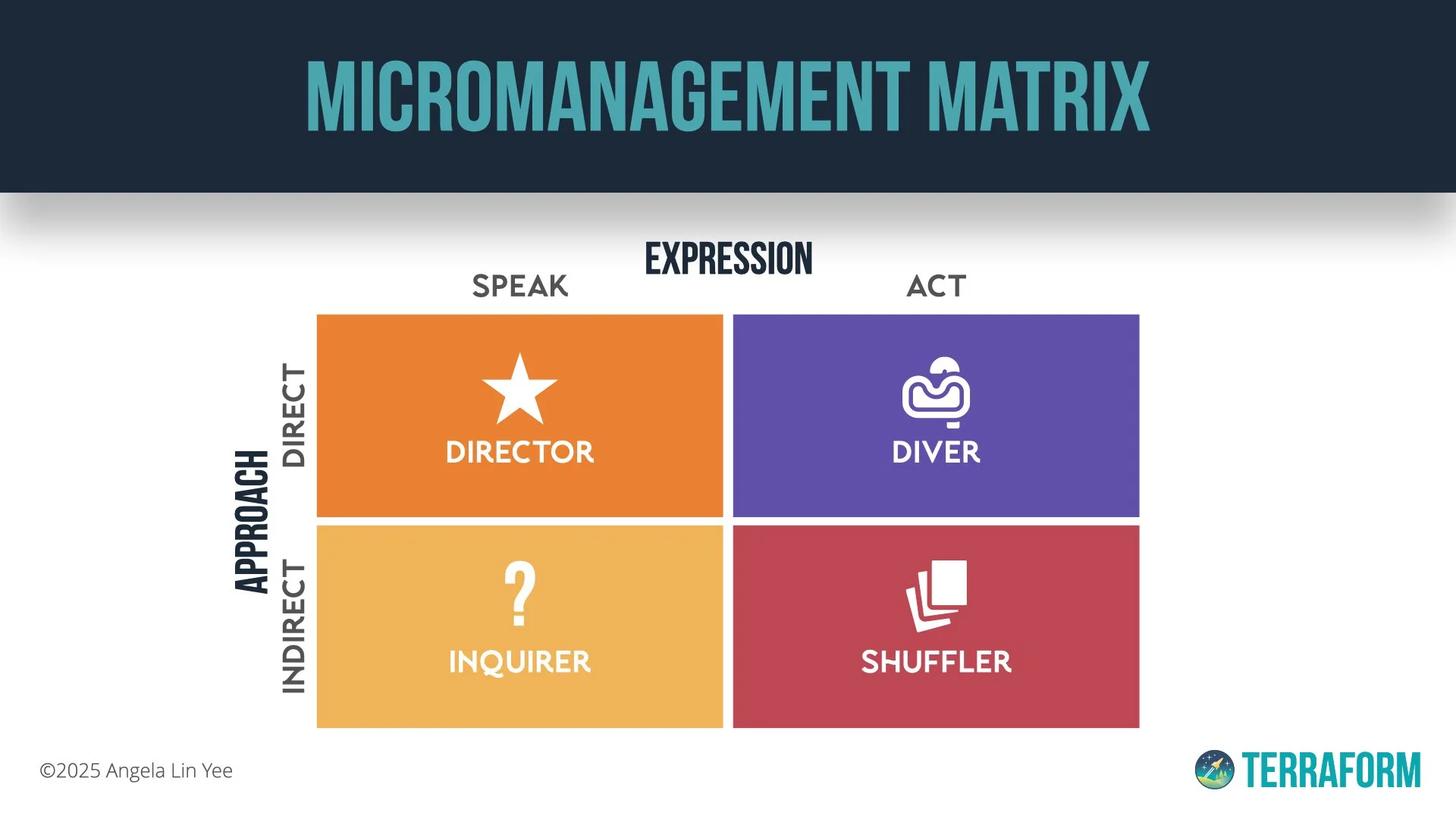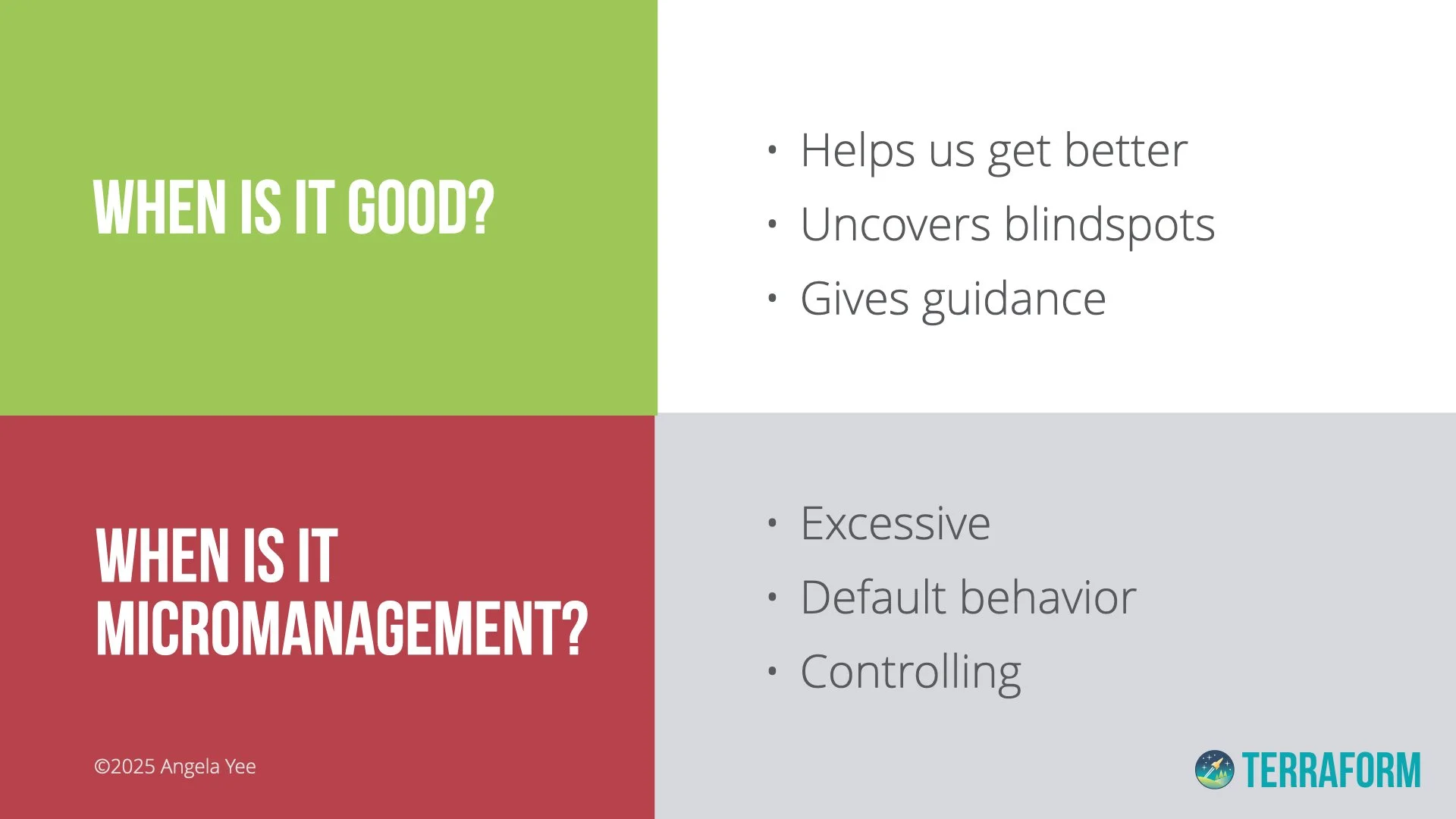What to Do If Your Boss Is a Micromanager? Micromanagement Matrix Explained
What do I do if my boss is a micromanager?
Micromanagers can be maddening, but understanding their behaviors and learning how to respond can make things easier.
Let’s dive into the Micromanagement Matrix, a framework that breaks down the four types of micromanagers and what you can do about them.
The Four Types of Micromanagers
The Director: Direct and vocal, they often issue orders—even on things outside their expertise.
The Inquirer: Indirect but verbal, they barrage you with hints and questions, trying to steer your work.
The Diver: Direct and action-oriented, they take over tasks without asking.
The Shuffler: Indirect and action-oriented, they make behind-the-scenes changes that alter your plans — and sometimes you’re the last to find out!
When is it micromanagement?
These behaviors can feel overbearing, but — surprisingly — they’re not always a sign of poor leadership.
When your boss sends suggestions your way, it can be a good thing — such as when it helps you improve, uncovers blindspots, or gives needed guidance.
But it veers into micromanagement territory when your boss steps in excessively. Their default behavior is telling you what to do or doing your work for you, or they feel a great need to always be in control.
Tips for Dealing with Micromanagement
Watch the video above, where I delve into seven techniques to relate to a micromanaging boss.
When your boss’s micromanagement becomes a constant habit, it’s time to act.
Here are three quick tips:
Set clear expectations upfront to reduce unnecessary check-ins.
Address concerns respectfully, focusing on how their involvement impacts the work, not making it personal.
Document your progress to build trust and demonstrate reliability.
It starts with you
You may not be able to change your boss, but you can fully make the decision to be an empowering leader — and avoid any annoying micromanagement habits!
Leadership isn’t about control but about trusting and empowering your team to do their best work.
Whether you’re navigating a micromanaging boss or evaluating your own leadership tendencies, self-awareness is the key to creating healthier, more productive workplaces.
Ready to gain clarity and momentum?
Organizational dynamics can make or break a team or organization. Developing good managers who know how to empower their teams, provide meaningful feedback, and avoid micromanagement is essential for sustainable success.
If you’re ready to create a culture of trust, accountability, and high performance, let’s talk!
Schedule a free Effectiveness Accelerator Call, and let’s explore how to transform your leadership and team dynamics for sustainable growth.




